“Don’t worry, she’s only playing,” whispers our guide. 100 kilos of scowling gorilla is barrelling towards us, tearing at plants for dramatic effect. I have a split second to decide whether to stay put or toss my safety briefing to the wind and run wildly into the jungle.
We’re gorilla trekking in Rwanda, on the edge of a misty clearing, halfway up a mountain in Volcanoes National Park. My heart is hammering, partly a side effect of the past three-plus hours of Dr. Livingstone-style adventuring through steep, muddy trails and dense bush.
But mostly it’s the profound physical reaction, the fear and exhilaration, at suddenly coming face to face with a family of mountain gorillas. And then being charged by one.
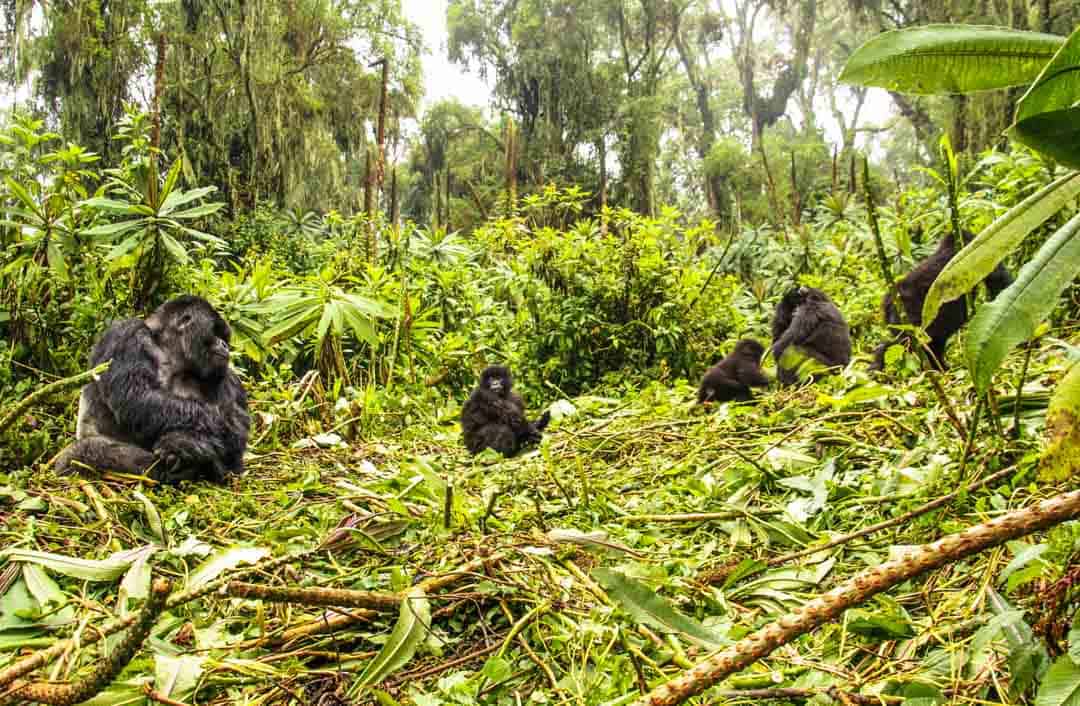
I can hardly blame her. I’m no morning person either and yet here we are, rumbling the family awake in their beautifully constructed jungle nest. I’d be cranky too.
Our guide knows better though and the gorilla, while maybe not quite playing, veers off at the very last moment and then studiously ignores us as she sets about stripping leaves for breakfast. My heart doesn’t stop pounding for the next hour.
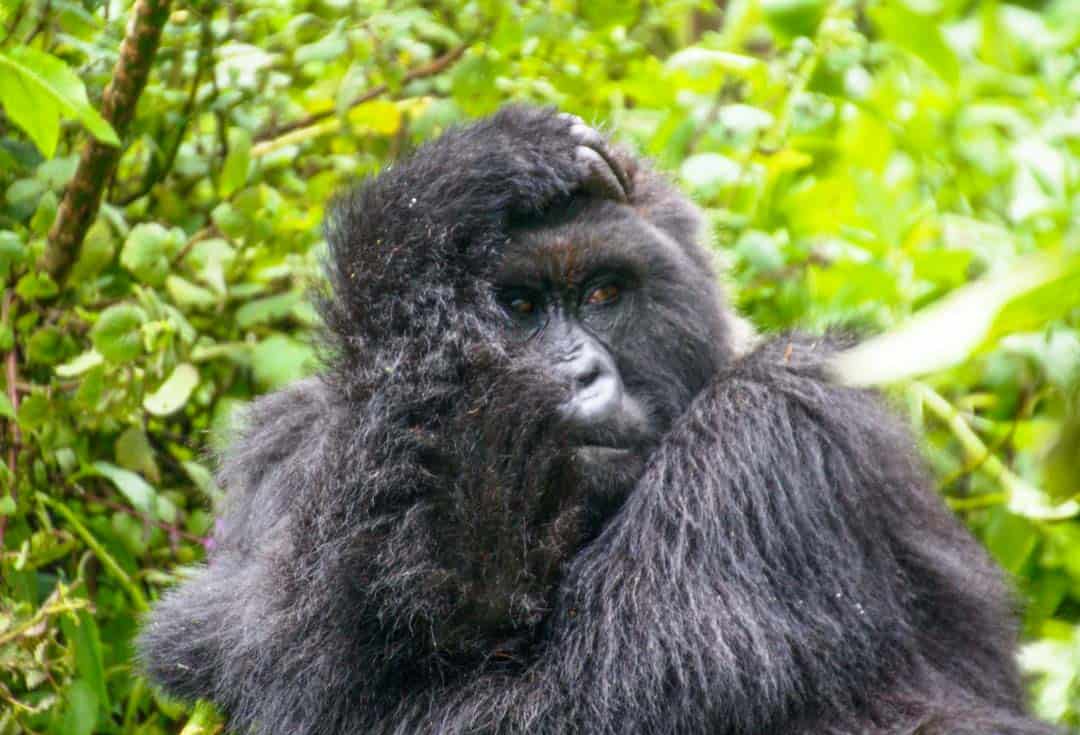
Around 480 gorillas inhabit the misty jungle and foothills of the Virunga Mountains, a verdant chain of volcanic peaks stretching along the border of Rwanda, Uganda and the Democratic Republic of Congo.
While still considered critically endangered, mountain gorilla numbers are on the rise, although with poaching an ever-lurking threat, along with habitat loss, disease and civil strife, their survival continues to rely on conservation efforts.
Funding for much of the gorilla conservation work in Rwanda is supported by tourism, and there’s an excited buzz of anticipation among the medley of visitors mustering in the early hours at the Rwanda gorilla trekking HQ, located in the dusty town of Ruhengeri.
Just 80 permits a day are released for small groups to visit the handful of habituated gorilla families that inhabit the mountains around us. As a welcome ceremony gets underway, local dancers beam megawatt smiles and a rhythmic drumbeat ramps up our enthusiasm to fever pitch.
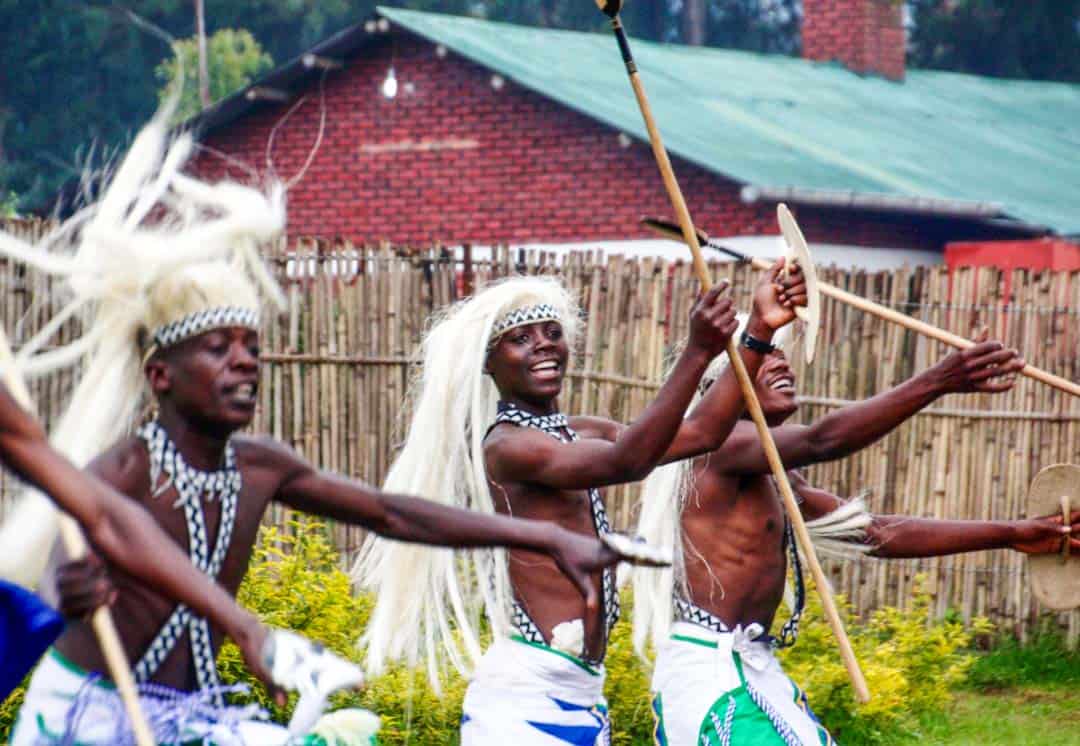
A sorting takes place shortly after our arrival, with visitors grouped into teams of similar fitness and stamina.
Each group is then matched to a gorilla family based on the distance and terrain to reach them. This can range from a relatively easy 45-minute walk to half a day or more of tough hiking.
Somehow we wind up in a team of fit-looking trekkers. It’s a minor anxiety that’s compounded when we meet our guide, who tells us cheerily that we’ll be visiting the Isabukuru family today, a difficult gorilla trek of “maybe three hours, maybe more”.
An hour’s steady climbing later, as I lean on a beautifully carved wooden trekking pole and suck in great lungfuls of air, the morning mists begin to clear.
We’re presented with panoramic views over bright green grassy fields and rich brown tilled earth, interrupted here and there with wooden huts and clutches of trees. In the distance, the great shadowy outlines of dormant volcanoes disappear into low clouds.
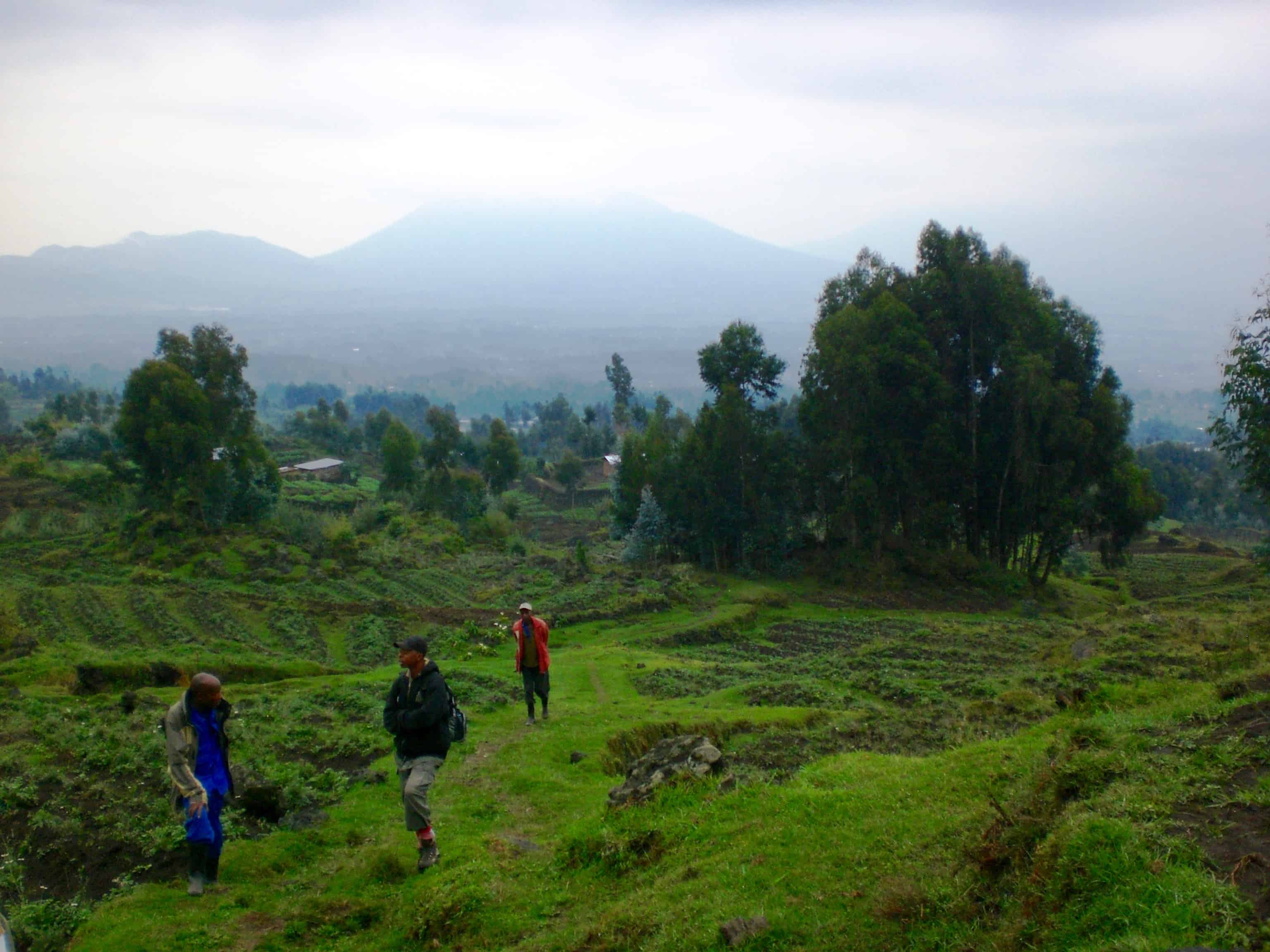
As it turns out, we have more than two hours of serious bush bashing ahead of us. We battle on, through drenching humidity, pants-piercing stinging nettles and mud bogs with the suction power of a Dyson.
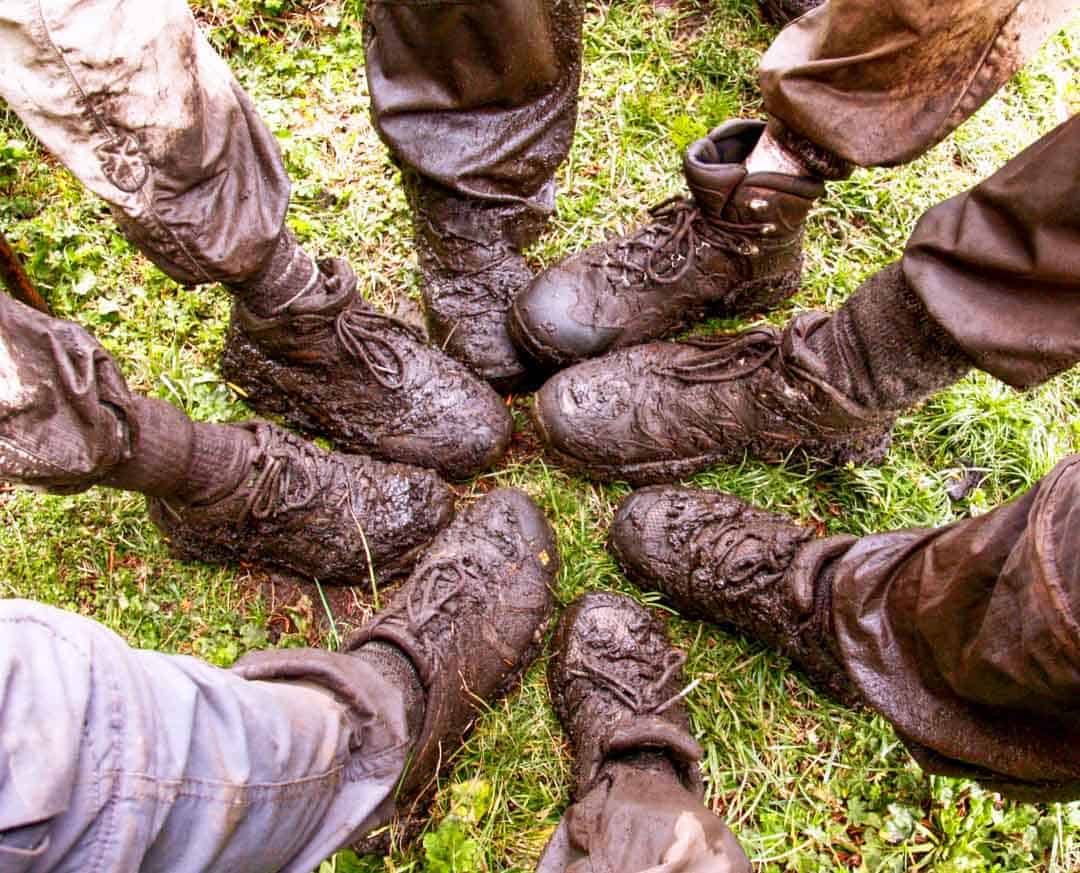
But we’re in excellent hands. Our trackers know the terrain intimately and they pay close attention to how each of us is faring as we haul ourselves up ridges using jungle vines, and shimmy down fern covered embankments.
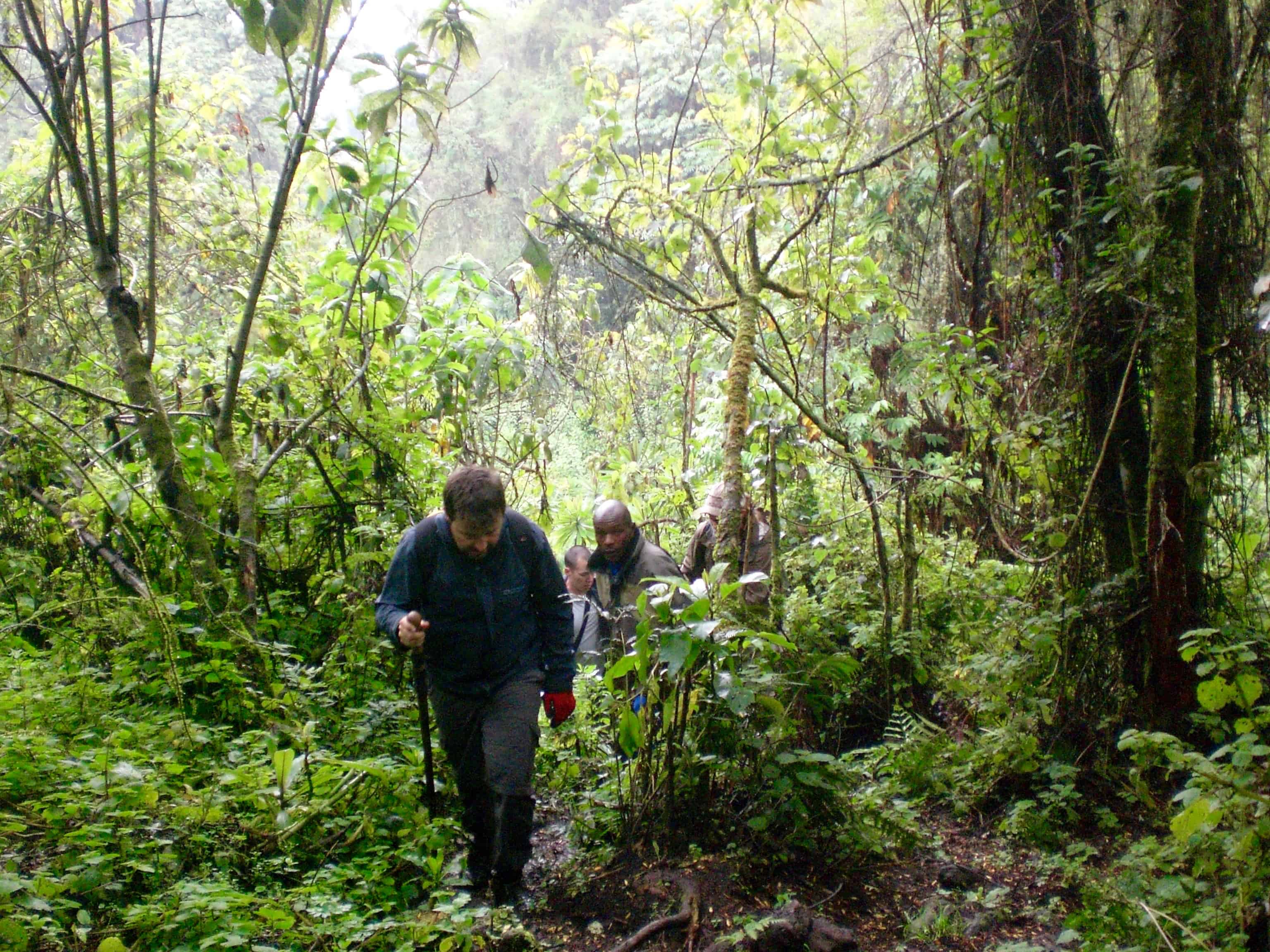
We learn during the day that many of Rwanda’s park rangers and trackers were once poachers. A program of education and training has refocused and engaged communities living in and around Volcanoes National Park towards gorilla trekking tourism and conservation: creating livelihood for the local people and incentive to protect the mountain gorillas and their habitat.
I hear our gorilla family before I see them. A popping sound sends a shot of adrenaline racing through me. I emerge into a clearing where nothing but a low hedge of ferns separates us from giant silverback Isabukuru, who’s on his feet and thumping his chest.
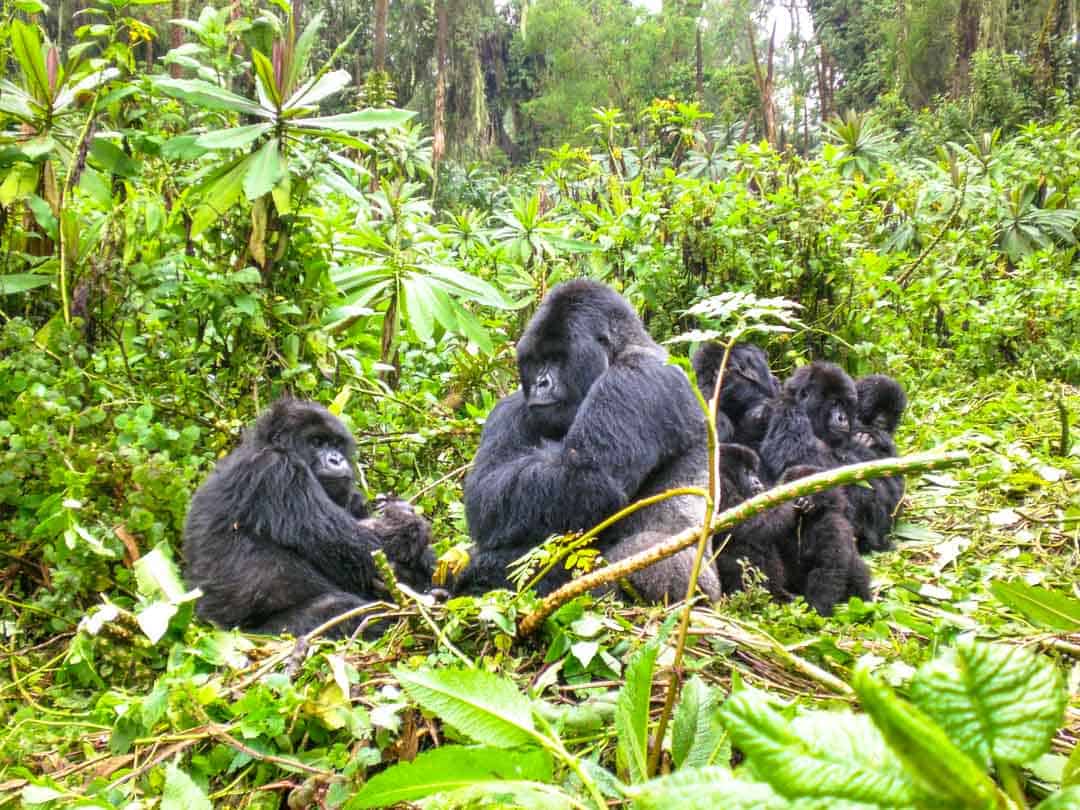
A couple of young gorillas roll about in the leaves at his feet while several females glare at us, one cradling a squirmy baby with a magnificent halo of fuzzy black hair.
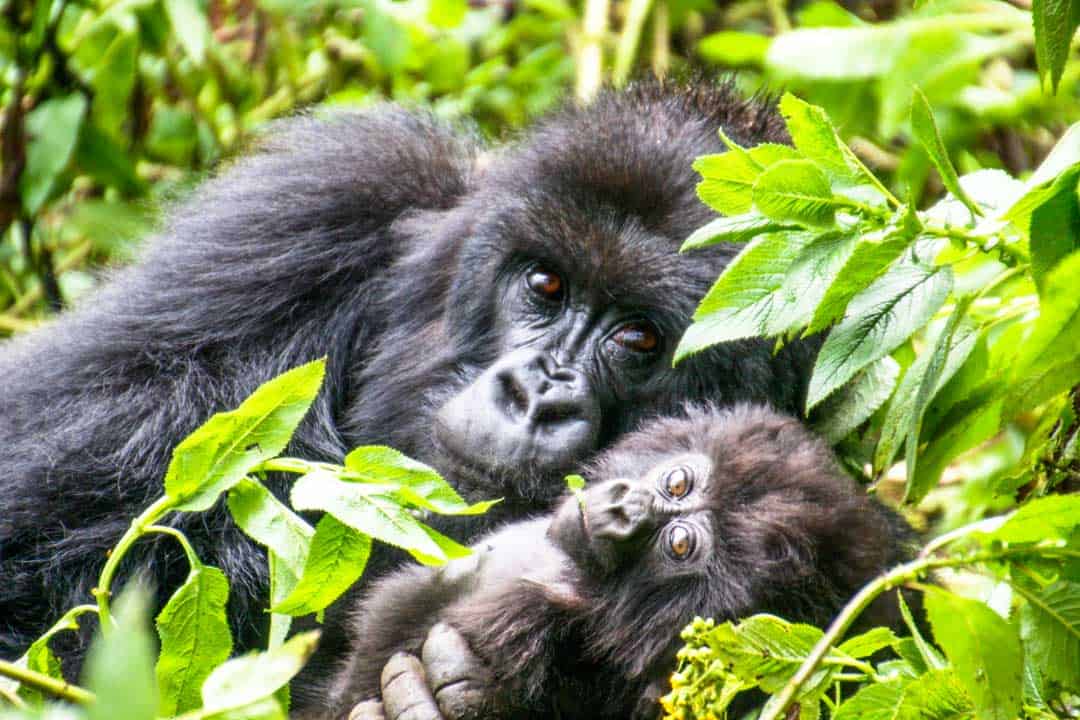
Our trackers move softly around Isabukuru and his family, making soothing grunting sounds. Reassured, the imposing giant settles back into the flattened leaves and is at once the master of cool: indifferent to our presence yet keenly alert to the smallest movement.
When he stares straight at me, I feel like he’s taking the measure of me. I’m the first to look away.
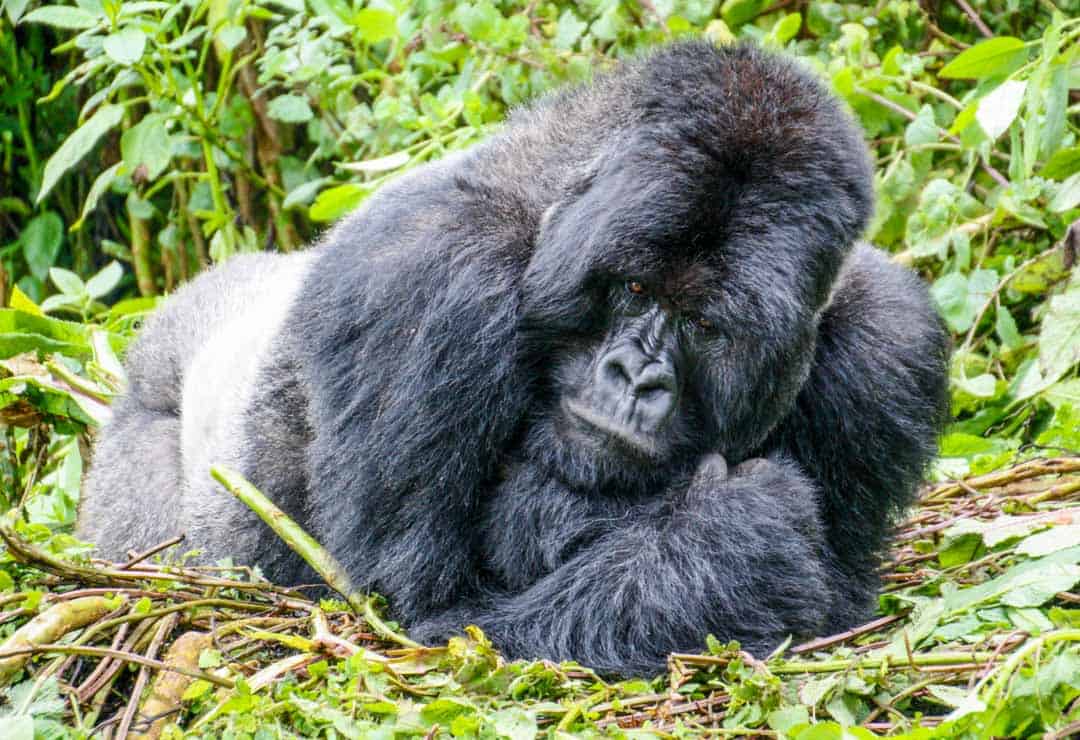
Vale Isabukuru: To our eternal sadness, we learned in 2017 that the magnificent, regal silverback we met on our trek, Isabukuru, passed away earlier that year after a battle with a gastro-related illness. He was just 24 years old.
Isabukuru was an exceptional gorilla, and not just because of his enormous size. He was known for his gentle nature, and the fact that – unusually – he adopted several young gorillas whose mothers had left the group while they were still small.
A second silverback in the troop, Kubaha, took over as the family’s leader.
Vale mighty Isabukuru.
Over the next hour, I reflect on the fact that the journey to this moment has been tough, but that’s as it should be. As one of the world’s great wildlife encounters, this is an experience to be earned.
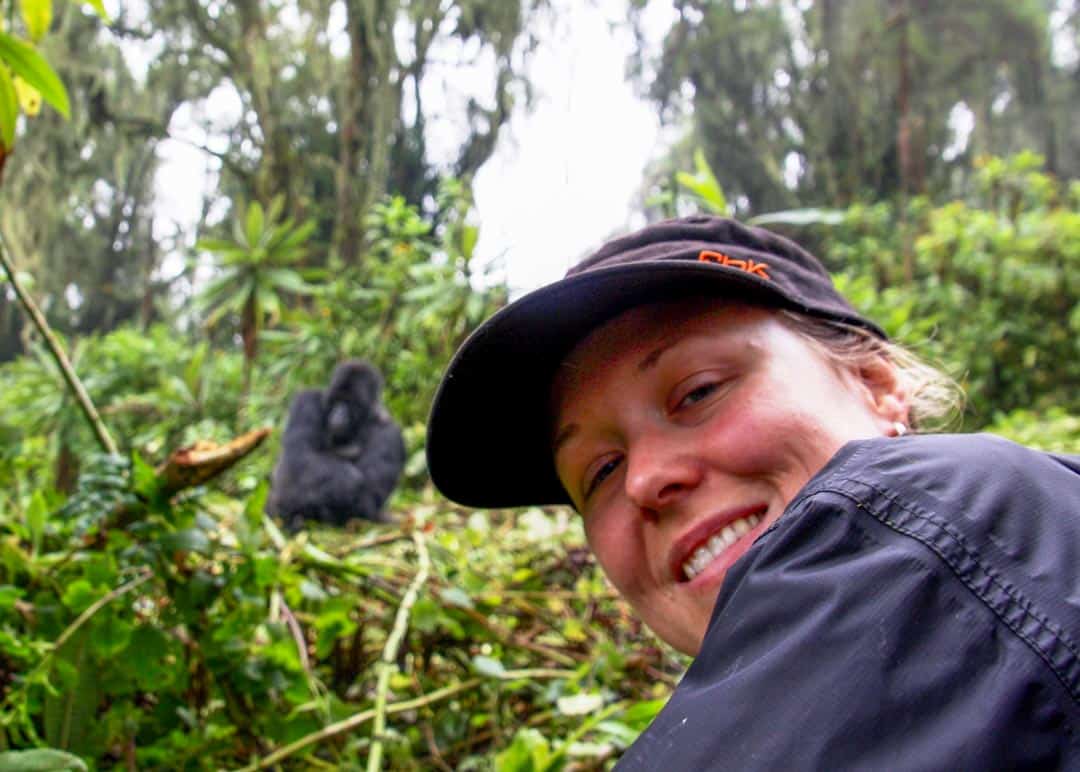
Dian Fossey, who called these mountains home and single-handedly started the movement to protect gorillas from extinction, once said, “I feel more comfortable with gorillas than people. I can anticipate what a gorilla’s going to do, and they’re purely motivated.”
I may need some more time in their presence before I can say the same, but after spending one precious hour in their company, I hope beyond hope to have the chance again one day.
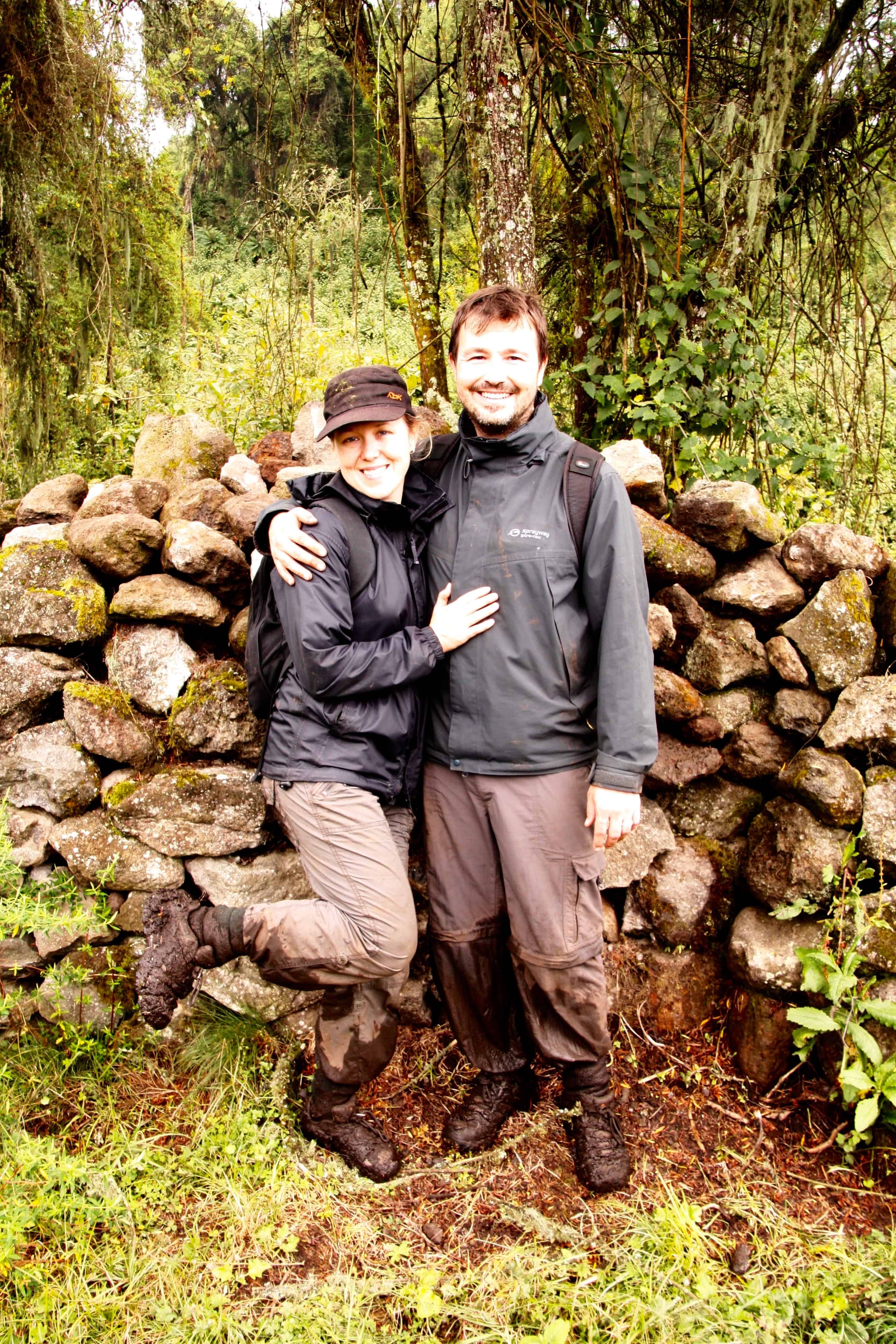
Good to know
How to do a gorilla trek
Gorilla trekking in Rwanda can be organised through a wide range of tour companies, or you can arrange to join a trek independently.
We went gorilla trekking in Volcanoes National Park as part of a 16-day tour with Intrepid Travel. Intrepid has since changed the format of this tour; their itinerary no longer visits Rwanda, but instead includes a gorilla trek in Uganda. They do, however, also offer a dedicated 4-day gorilla trekking tour in Rwanda.
Gorilla trekking permits
Every gorilla trek requires a permit, which should be organised well in advance, as daily numbers are strictly limited. If you’re travelling with a tour group, they will usually organise the permit for you as part of your tour. Find out more about permits at the Visit Rwanda website.
Gorilla trekking cost
In Rwanda, gorilla trekking costs have doubled since we visited, a move aimed at boosting conservation efforts and development of the communities around Volcanoes National Park.
It’s now around $1,500 for a permit, although if you spend three days or more visiting other national parks in the region between November and May, you’ll get a 30% discount.
The price hike means many more people are now opting to go gorilla trekking in Uganda, where the price for a permit – around $600 – is less than half of what it is in Rwanda.
There are pros and cons to this: By positioning itself as a luxury option for gorilla trekking, Rwanda may experience a decrease in trekker numbers as people head to Uganda instead, negatively impacting the local tourism industry.
On the plus side: fewer trekkers, which is nice for other visitors, but most importantly, it helps ease the pressures of tourism on the gorillas and their fragile jungle home, and that can’t be a bad thing.
How many people are in a gorilla trek group
In Rwanda, only 80 permits are released each day to visit the habituated families in the park. There are around 10 groups of 8 people each, plus guides and trackers.
How long will you spend with the gorillas?
Not taking into account the time it takes to hike to your gorilla troop, an adventure in itself that can vary from half-an-hour to three hours or more each way, visits with gorilla families last one hour only. This is for their health and wellbeing.
It might not feel like long, but trust us, it’s one of the most momentous hours you’ll ever experience.
What to wear gorilla trekking
This is an important consideration as you’ll likely be trekking through dense jungle and boggy mud, possibly also at altitude depending on where you’re trekking. Long sleeves and hardy hiking pants are necessary. It can be chilly one minute and humid the next, so layers help.
As you’ll find yourself reaching for plants and branches to haul yourself through the vegetation, well-fitting gardening gloves are useful, particularly against stinging nettles.
We borrowed some carved wooden hiking poles for the trek, which came in very handy, especially when we were stuck in bogs.
Good hiking boots are critical for comfort, but bear in mind they’ll likely be completely caked in mud by the end of the trek. On our way back down to HQ after the trek, some entrepreneurial local kids offered to take any unwanted shoes off our hands – we learned they also do a pretty good job in cleaning and on-selling trekkers’ discarded hiking boots.
Got a question or comment? Let us know in the comments below. For more epic wildlife experiences around the world, head over to our Wildlife page.

Thanks for sharing information about gorilla trekking.
Thanks Gava, glad you found it useful.